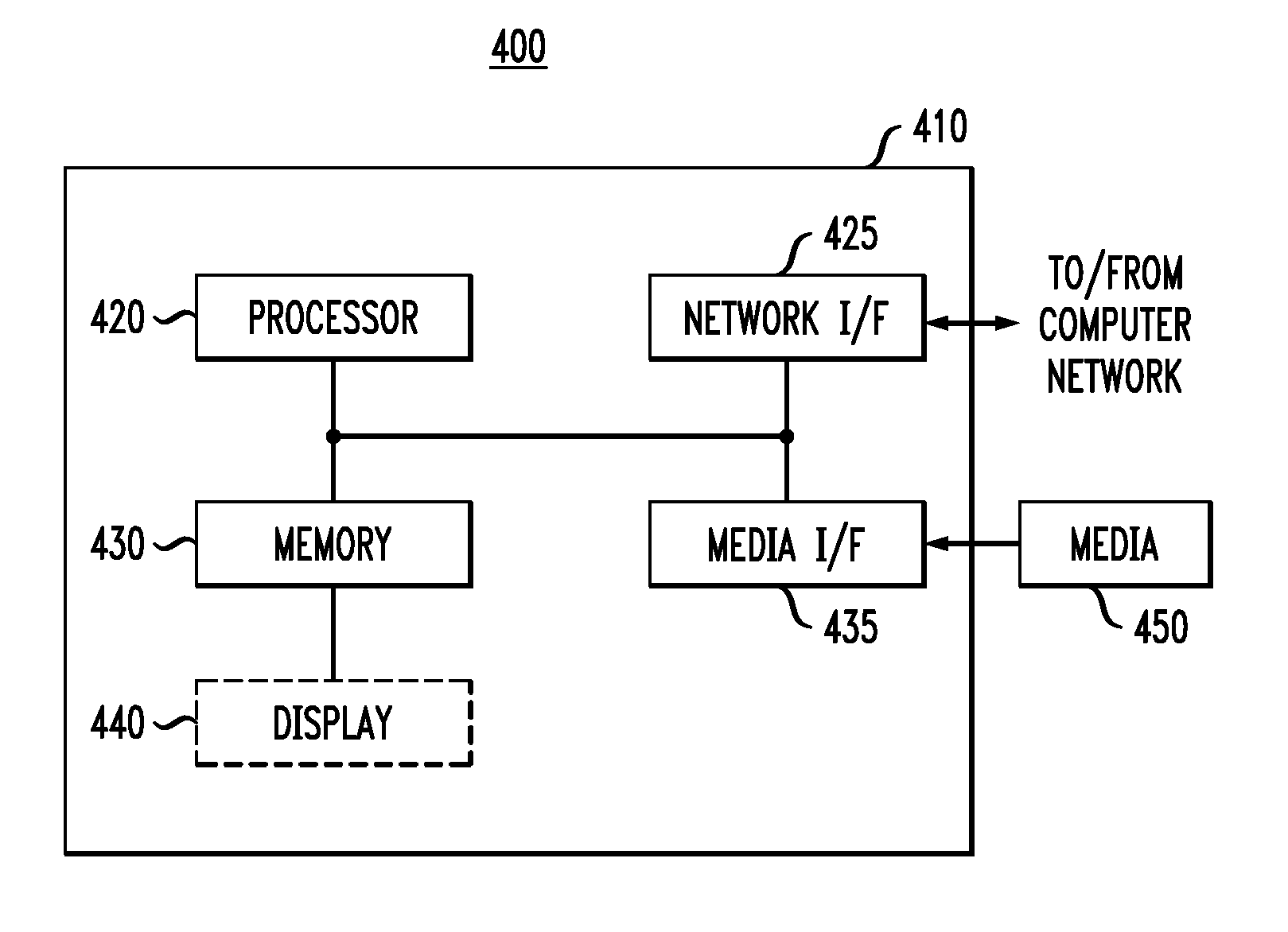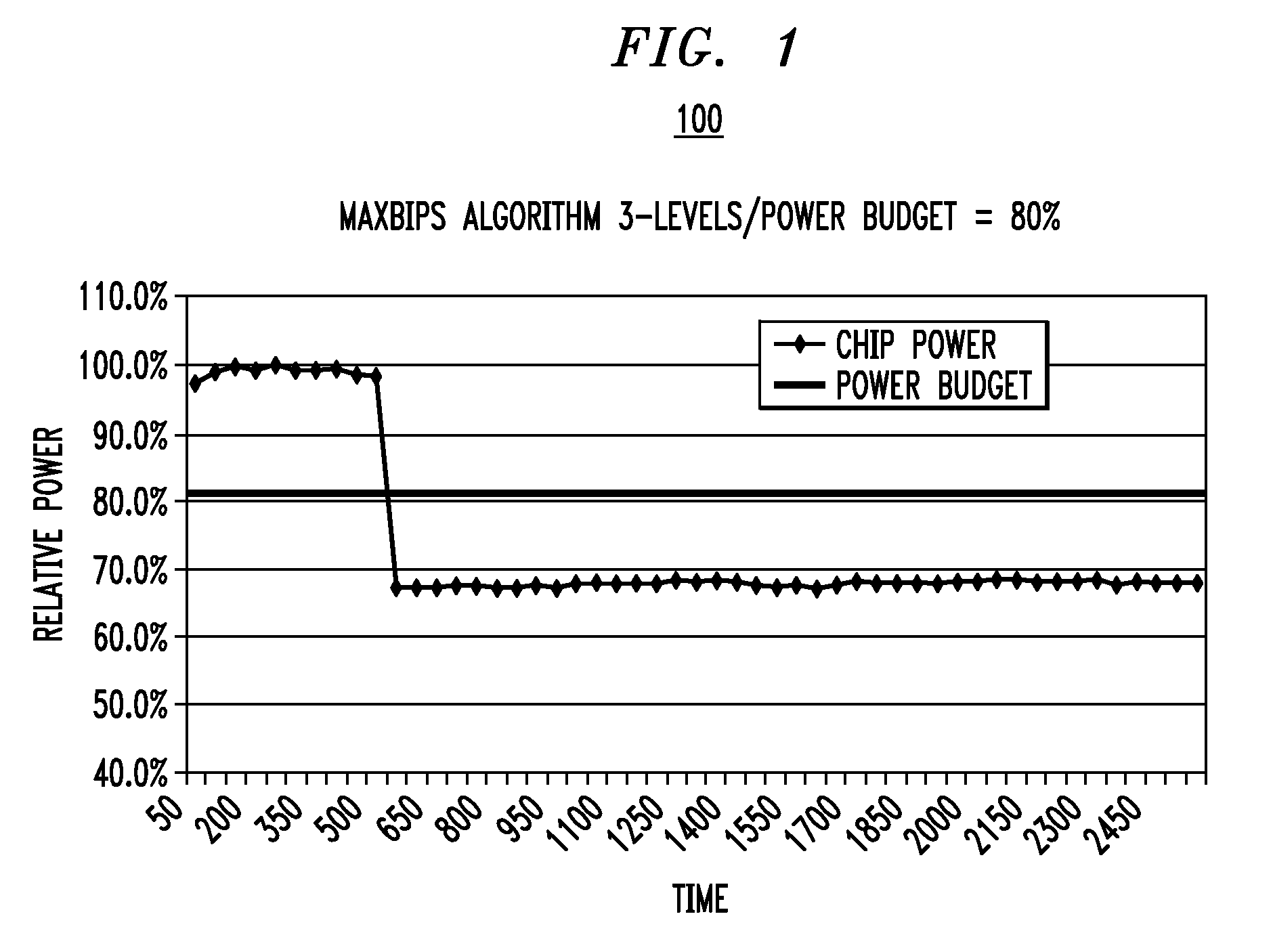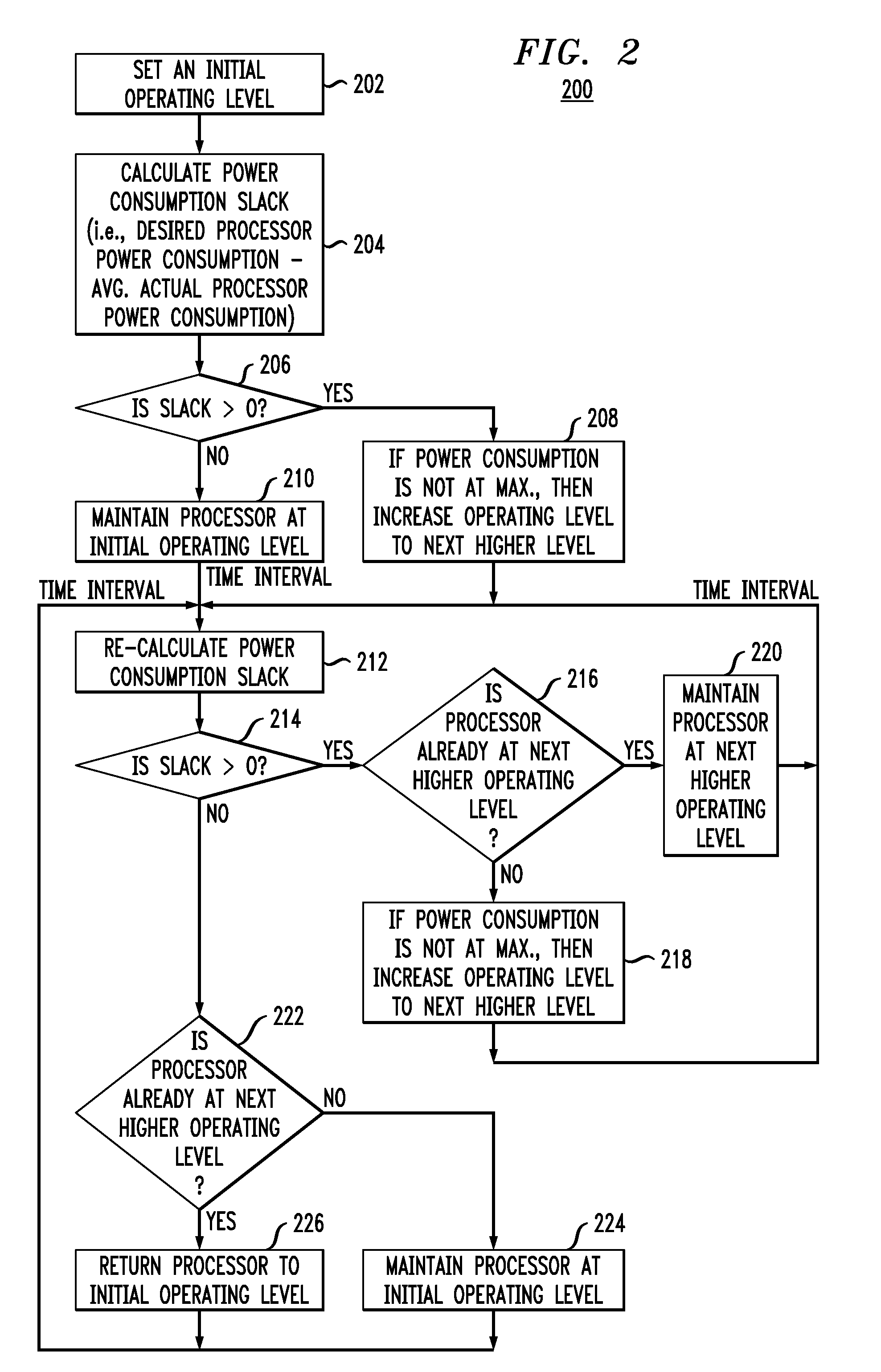Self-Tuning Power Management Techniques
a power management and self-tuning technology, applied in the field of power management, can solve the problems of large margin between power budget and actual consumed power, and suffer processor performance, and achieve the effect of increasing the actual power consumption of the processor chip
- Summary
- Abstract
- Description
- Claims
- Application Information
AI Technical Summary
Benefits of technology
Problems solved by technology
Method used
Image
Examples
Embodiment Construction
[0013]FIG. 2 is a diagram illustrating exemplary methodology 200 for processor chip power management. The processor chip can be a single core processor chip or a multi-core processor chip. As will be described in detail below, methodology 200 can be implemented using standard power management actuators, such as dynamic frequency scaling (DFS) and / or combined frequency and voltage scaling (DVFS) actuators, to adjust operating levels (see below). In general, power management actuators are typically only adjustable in discrete increments (from one operating level to the next), e.g., in increments of 0.1 volts (V) in the case of DVFS actuators. Thus, by way of example only, if a current operating level has a voltage of 0.5V, then an increase to 0.6V would constitute an increase to the next higher operating level (see description below).
[0014]In step 202, at an initial time point ti, an initial operating level for the processor chip is set to a level such that the processor chip, when op...
PUM
 Login to View More
Login to View More Abstract
Description
Claims
Application Information
 Login to View More
Login to View More - R&D
- Intellectual Property
- Life Sciences
- Materials
- Tech Scout
- Unparalleled Data Quality
- Higher Quality Content
- 60% Fewer Hallucinations
Browse by: Latest US Patents, China's latest patents, Technical Efficacy Thesaurus, Application Domain, Technology Topic, Popular Technical Reports.
© 2025 PatSnap. All rights reserved.Legal|Privacy policy|Modern Slavery Act Transparency Statement|Sitemap|About US| Contact US: help@patsnap.com



